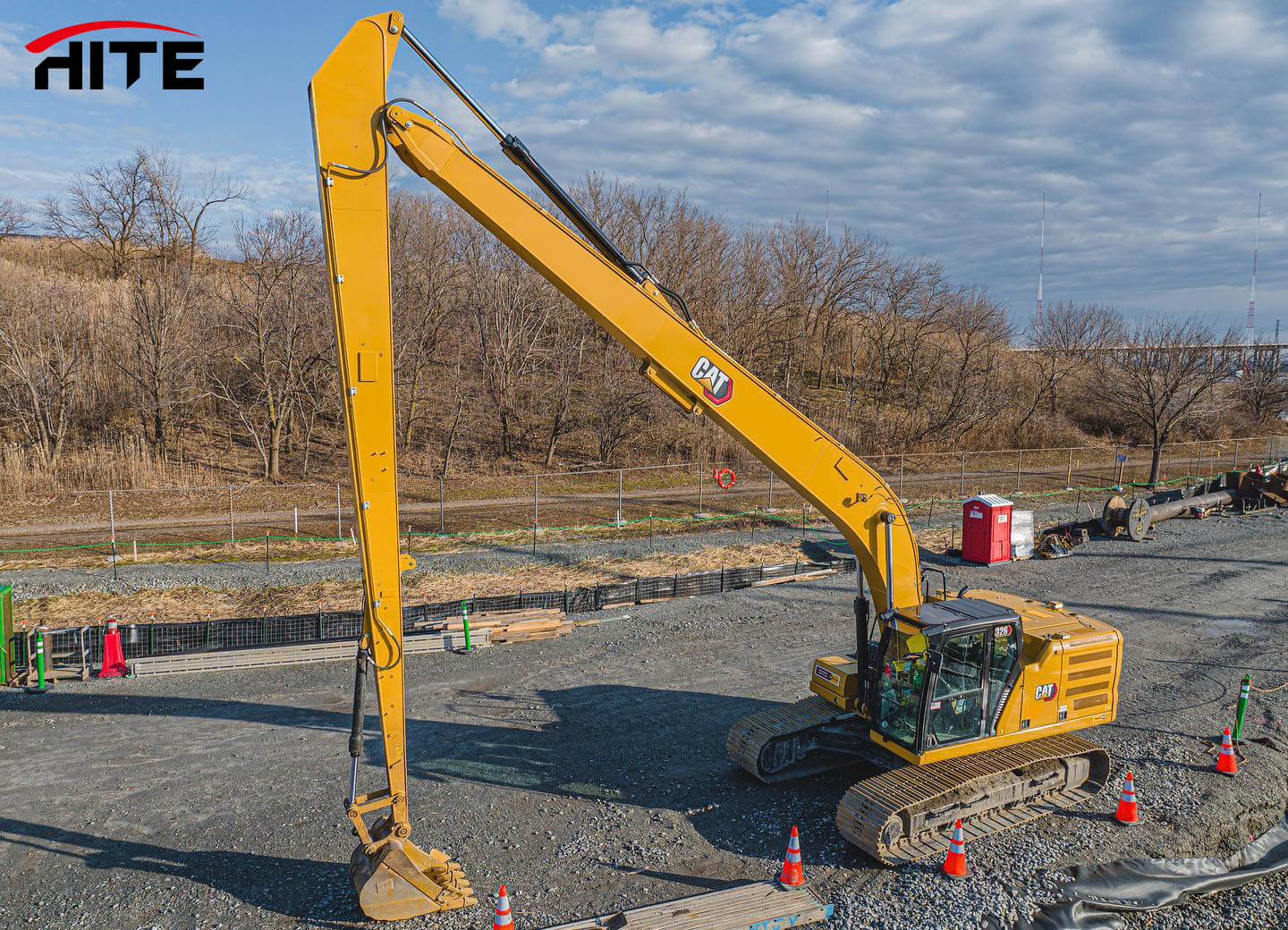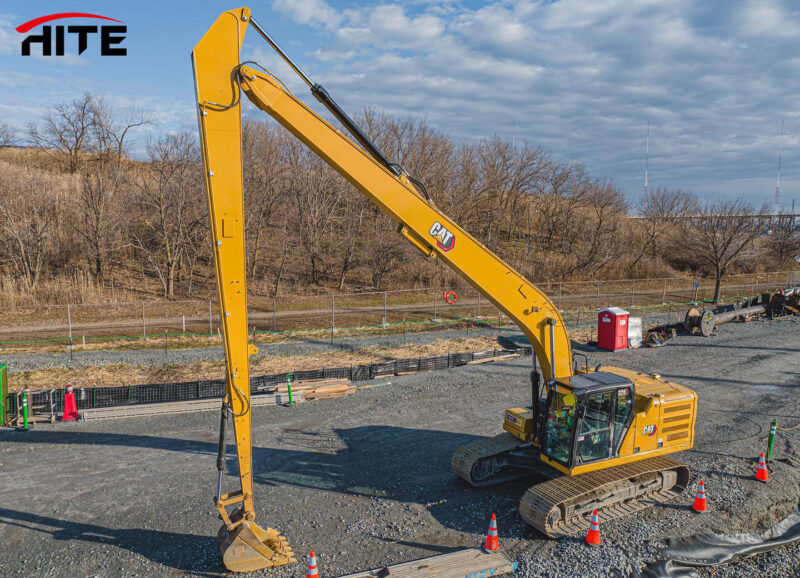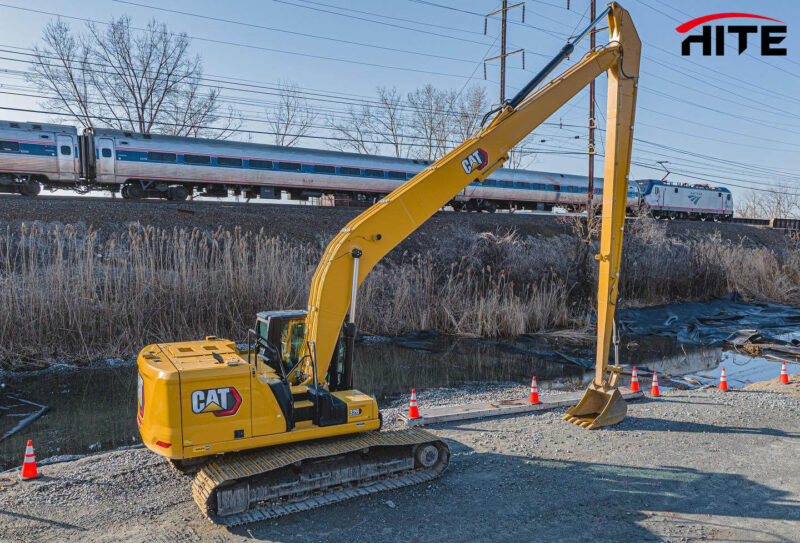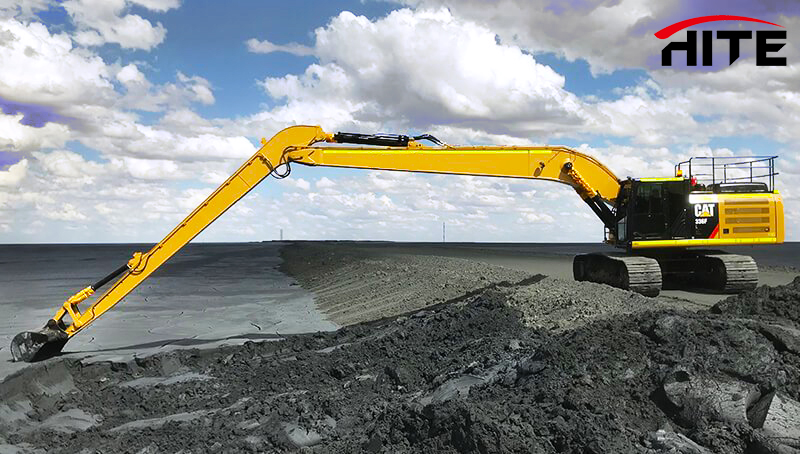Long-reach excavators are heavy equipment machines equipped with excavator longer front boom. They are also commonly referred to as “long reach,” “high reach,” or “long front” excavators. Generally, these are used in applications of specialized types where reach and depth emerge to be very important parameters of the project at hand. These have extended arms and booms to work in the same milieu where standard excavators fail to function resourcefully. Here in this article, the advantage and disadvantage of using long front booms in a different kind of construction and excavation projects is going to be discussed, and practical examples will be given for better understanding of the advantage of using long front booms.
Why should the customer consider buying excavator long front boom?
Extended Reach and Depth: The excavator longer front boom carry and larger capacity guarantee that these booms can excavate much longer and deeper than the standard-sized excavators. These excavators are most suitable in dredging, deep foundation digging, and slope forming work. For instance, long-reach excavators were used in the construction of Laúca Dam in Angola to place rock and earth materials that would be out of reach for conventional machines, which contributed immensely to the end of the project.
Enhanced Safety: It reduces the potential of accidents by allowing operators to work from a safer distance from the work site. This is of utmost importance, particularly in unstable or dangerous environments like what obtains during demolition projects or when working near water bodies. In the demolition of the old Pinellas Bayway Bridge, structures that were dismantled far from the danger reach were enabled without endangering the crew by the long reach of the excavators in Florida.
Minimal Environmental Impact: Long reach excavators work excellently on jobs that require a soft touch—such as with environmental restoration or in ecologically sensitive areas. Their ability to work from a distance represents much less ground disturbance and a reduced risk of environmental damage. For example, in the restoration of wetlands in Louisiana, long-reach excavators made it possible to put soil and plant materials in place without disrupting surrounding systems.
Versatility: The excavator longer front boom is fitted with different working tools and attachments that enable it to do a wide range of work applications from digging, material handling, and thus said to be versatile in demolition. This versatility came to the fore during the Fukushima cleanup operation where the long-reach excavators were effectively used for removing debris and contaminated soil without allowing the operators to get too close to radioactive materials.
Disadvantages of Excavator Long Front Boom
Reduced Power and Efficiency: Excavator long front boom designed with an extended reach cause much reduced power and efficiency in most cases. The longer the boom, the more it loses force at its maximum reach, which means that powerful digging or lifting operations would suffer from this deficit.
Increased Maintenance and Costs: One of the reasons for avoiding long-reach excavators is the increased frequency of maintenance since the stress is transferred to the long arms and hydraulic systems. Otherwise, they offer some kind of specialty, which again incurs more expenses than regular ones during their ownership and operation.
Challenges with Transport and Accessibility: Size and boom length of Long-Reach Excavators are quite large and pose challenges during transportation. It requires procurement, issuance, special permits, and logistics planning; otherwise, the very flexibility of these machines to be used in limited spaces.
Requires Specialized Training: The operators will have to be equipped with specialized training in the use of long reach excavators since, for instance, they are supposed to reach far-off and challenging areas, for instance. This may, in turn, increase operational costs and cause time overruns if such operators are unavailable in the vicinity.
Conclusion
Excavator long front boom have a few problems, but they are highly important equipment within certain specified areas. Thus, their application does prove beneficial in some of the projects that would require an extended reach or low disturbance. For example, in environmental restoration works and deep foundation works, operations in hazardous and areas of easy access, and other types of work. However, consideration of the project type and how these machines would be limited is needed by the project managers. The cons of using these potent machines in an environment where they would be most appropriate can, however, be corrected with proper planning, training, and maintenance to enhance the effective use of the machines. This makes it absolutely necessary that the final choice for the proper selection of equipment be absolutely project-specific in order to achieve the right balance between reach, power, and operational efficiency.








Leave A Comment